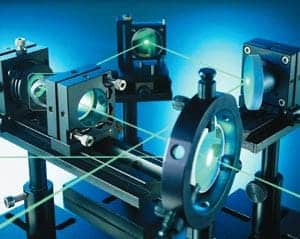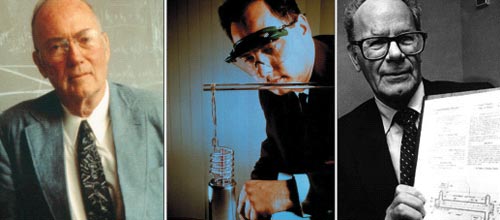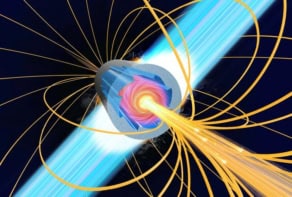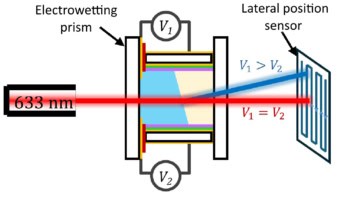Beam: The Race to Make the Laser
Jeff Hecht
2005 Oxford University Press
284pp £17.99/$29.95 hb

The laser is an essential feature of modern life, from telecommunications to medicine. Its history has been told many times, but Beam focuses on the three intense years from the birth of the idea of the laser to its first demonstration in 1960. Jeff Hecht, a science journalist who has written about lasers and optical physics for the past 30 years, describes the emergence of the concept of a source of coherent optical light.
But who really invented the laser? Hecht portrays the varied characters involved at several competing laboratories, examining the dramatic claims and bizarre twists along the road to success. The book’s chapters are divided between the different labs, meaning some duplication of material as the different players are affected by the same events.
The early development of the laser rests on the shoulders of Charles Townes and Gordon Gould: two very different men who in 1957 both began thinking about how to build a coherent optical beam.
Charles Townes, now 90, is an establishment scientist. He sought fame through academic recognition, which he certainly achieved with the award of a Nobel prize in 1964. He built the first maser, the microwave counterpart of the laser, in 1953, and then began to think about a device, which he termed an “optical maser”, that would operate at wavelengths a thousand times shorter. With his academic perspective, he saw the aim mainly as a contribution to spectroscopy. As a consultant at Bell Labs in New Jersey, he toiled long hours through the week, devoting his Sundays to church and family.
Gordon Gould, who died last year aged 85, was a contrasting character. Dropping out of his doctoral studies in 1958 to become an inventor with the small company Technical Research Group (TRG) in Long Island, New York, he was outside the scientific establishment from the beginning. With an independent-minded and imaginative approach, he envisaged the great potential of coherent optical light, and was in 1957 the first to coin the term “laser”. He foresaw applications in communications technology, materials processing and weapons construction, documenting many of his ideas in extensive notebooks.
But when TRG was awarded a large military contract to build a laser he was barred from the work: his early enthusiasm for Marxism precluded the necessary security clearance. This denied Gould access to his own notebooks, and deprived the company of the success his early insights promised. He also failed to patent his ideas until 1959, leading to decades of legal battles to establish himself as the inventor of the laser. He was eventually awarded patents for some of his inventions, but such delayed success gave him little glory and the legal expenses took most of the money.
Townes and his brother-in-law Arthur Schawlow had the impressive resources of Bell Labs at their disposal. Success ought to have been assured, but they directed their effort at creating a continuous, rather than pulsed, laser. They wanted a source that supplied a steady flow of light rather than intermittent bursts of energy, as the former would be more useful for their spectroscopic studies. This approach ruled out using the ruby crystal as a laser material, and in any case Schawlow was convinced that ruby generated light too inefficiently to function as a laser. In those days it was far from easy to perform precision optical measurements, and established misconceptions tended to linger on.
Hecht then describes how a dark horse overturned those misapprehensions to win the race. Theodore Maiman, working for Hughes Research Laboratory in California, aimed to make a pulsed laser. In the spring of 1960 he successfully demonstrated that his ruby laser emitted coherent light, and submitted an article to Physical Review Letters. Ironically, the then-editor Sam Goudsmit rejected the manuscript out of hand. The journal had been swamped with technical papers on masers, and Maiman’s work, using Townes’ term “optical maser”, was rejected as just another of these, thereby missing the true significance of the work. Maiman submitted a brief version to Nature, where it was promptly published, and he proceeded to write a full-length paper and submitted it to the Journal of Applied Physics. However, its acceptance was barred by it already having been published, without Maiman’s authorization, in the little-known journal British Communications and Electronics.
Townes and his colleagues at Bell Labs were stunned by Maiman’s success, but rapidly constructed their own ruby laser. Their paper was accepted by Physical Review Letters as it avoided the use of the term “maser”. It gave minimal credit to Maiman and formed the basis for the laboratory’s claim to have invented the laser. Several other laser devices followed shortly afterwards. Later in 1960 Peter Sorokin and Mirek Stevenson at IBM achieved the second working system, based on uranium impurities.
In a parallel project at Bell Labs, Ali Javan, Bill Bennett and Don Herriott worked on a gas laser using helium and neon. With this technology they achieved the first continuously operating laser early in 1961. Hecht’s book ends with the first semiconductor laser, realized in 1962 by groups at General Electrics, IBM and the Massachusetts Institute of Technology, completing the demonstration of all the basic laser types. Readers interested in subsequent developments should turn to texts such as Mario Bertolotti’s The History of the Laser.
So, who is this book written for? As an experienced science writer, Hecht’s text is accessible to a readership of any background. The historical developments are dramatic enough to maintain interest, but the book is rather technical in its descriptions of the technological advances. The author gets the physics right, but it is not always clear that he translates it to the popular level intended. For my part, I enjoyed the details and anecdotes in the book, and felt they would make good additions to my teaching of laser physics. Beam is perhaps best suited to those who are learning or teaching the subject. They will appreciate the story of the laser’s early development, with its brilliant successes and ironic failures. With laser physics being the huge field that it is, half a century after its genesis, this should be a broad enough readership.



